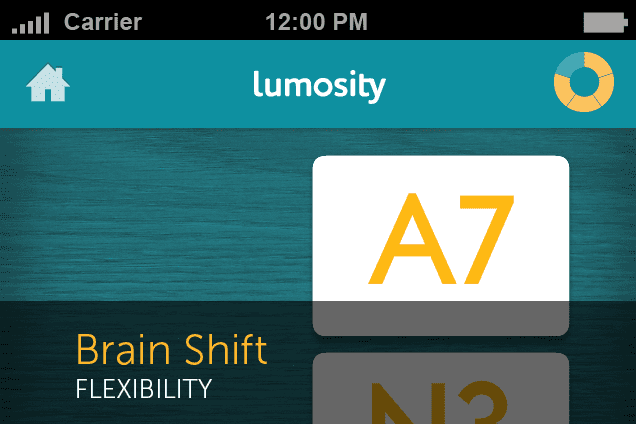
When I was in middle school and high school, teachers loved to impart various tidbits of wisdom about the way students learn during lectures, always couched in such a way as to indicate these were scientifically accepted facts. You know everyone learns differently. Do you think you learn better through words or pictures? Did you know you learn different subjects with different sides of the brain?
Welp, they were wrong. Many of the theories of “brain-based” education, a method of instruction supposedly based on neuroscience, have been largely debunked by rigorous science. Brain-based education studies are usually poorly designed and badly controlled. Nevertheless, myths about how we learn persist in the popular imagination, and, most importantly, in educational materials and references for teachers. Here are just a few things we usually get wrong about the way the brain learns:
1. We Learn Best When Teaching Is Tailored To Our Learning Style
Every child is a beautiful, unique snowflake, as the theory goes, and every individual learns in a slightly different way. Some of us learn best by hearing, others by seeing information displayed as pictures, still others by reading words on a page. One study found that there are more than 70 different learning styles, which usually categorize people into dichotomous types, like visual versus verbal or active versus reflective, or, in the case of the Myers-Briggs test, Introversion Intuition Feeling Judging versus Extraversion Sensing Thinking Perceiving. According to what many psychologists label the learning styles hypothesis, instructors should teach in a way that targets our various learning styles, what’s called “meshing.” Sounds fair enough.
Except for years, the evidence has been mounting that a curriculum tailored toward a specific learning style isn’t any more effective than just, well, teaching.
Hal Pashler, a psychology professor at the University of California, San Diego, led a review study on learning styles in Psychological Science In The Public Interest in 2009. He and his co-authors found little evidence to suggest teaching to a specific learning style improves a person’s education. More precisely, to prove that there’s a learning style that you can teach to, you have to prove that people have a harder time learning if they are taught to a style that is not their style. And few studies even test that hypothesis.
“It takes a fairly particular sort of research design to really test whether learning styles really have any utility,” Pashler tells Popular Science. “There are hundreds of articles on learning styles–practically none, a small handful, that used appropriate research design. Their results tend to be negative.”
“The evidence is a great big zero,” Pashler says.Most assessments that identify what a person’s learning style might be are based on self-reported surveys, where people describe how they learn best. But “self report really doesn’t work very well if you’re trying to get into psychological traits,” says Paul A. Kirschner, an educational psychology professor who directs the Learning and Cognition program at the Open University of the Netherlands. People might prefer to learn a certain way–or think they prefer a certain way–but that isn’t necessarily what’s best for them.
“The evidence is a great big zero” for learning styles, Pashler says. Given that, “it’s kind of astonishing that people would pursue this notion.”
Furthermore, many assessments of learning styles were created by for-profit companies, which doesn’t always make for the most reliable data. The companies sell tests and educational materials that allow teachers to assess the learning styles of their students. It benefits companies to say their system is an accurate teaching method, since they make money off every student who takes their test.
That’s not to suggest that everything should be taught in the exact same way. The best way to teach something might depend on the nature of the material itself. For example, it would be hard to teach geometry without diagrams or reading and writing without words.
Elizabeth Peterson, a senior lecturer in psychology at New Zealand’s University of Auckland, says that although there may not be consistent data which shows that teaching to someone’s learning style can significantly improve his or her education, that doesn’t mean the theory is completely useless.
“[T]hinking about style and getting teachers to teach about style and parents to think about style isn’t necessarily harmful, it’s what you do with that information,” she says, particularly when it comes to labeling students as one thing or another. “I think it’s quite useful to think about differences and maybe I could try teaching this in a different way in my classroom and see if my students are more interested or invigorated.”

Myths Of Learning
2. Some People Are Left-Brained, Some People Are Right-Brained
According to common lore, certain people use the left side of their brain more, while others use their right side–just like being right- or left-handed. Left-brain thinkers are more logical, while right-brain thinkers are more creative. The left brain is responsible for language, while the right brain is used for visual and spatial processing.
To some extent, it’s true that the two sides of the brain are associated with certain activities. But that doesn’t mean you think or learn with just one side.
“The conventional wisdom from a long time ago is that there was hemispheric specialization–one hemisphere was responsible for things such as language, and the other for spatial ability, and that ne’er the two would ever meet,” explains Larry Alferink, a professor emeritus of psychology at Illinois State University. “What developed out of that was a view that you should teach to one hemisphere or the other depending on what you were trying to teach.” For example, you would teach to the left hemisphere by making students read and write, and use visualizations to teach to the right hemisphere.
Along with that came the idea that different genders had different dominant hemispheres–left-brained girls versus right-brained boys. (You know, because boys are better than girls at math.) Based on these types of supposed brain differences between boys and girls, for instance, a Kentucky school segregated its classrooms by gender in the early 2000s. “The science underlying that is really really suspect,” Alferink says.
Many of the early studies that the idea of left-brain/right-brain learning were based on looked at individuals who had a severed corpus callosum–the band of fibers that connects the two hemispheres of the brain. “The problem is, most of us don’t have that corpus callosum severed,” Alferink says. When scientists looked at the brains of healthy people, they realized that both hemispheres are involved in most processes. Even in damaged brains, there’s not necessarily a left/right dichotomy of function. “It’s also the case that the hemispheres, if they’re damaged, the other hemisphere can pick up some of the functions that are necessary,” in what’s called brain plasticity. “The hemispheres are not completely specialized.”
We didn’t find the neural basis of being left-brained or right-brained.Scientists are still arguing over how much brain function is lateralized (concentrated in one side or the other), but a recent study found that people don’t seem to have an overall dominant hemisphere. The analysis in PLOS ONE of brain scans from 1,011 people found no evidence of a greater left-brain or right-brain dominance across neural networks in the brain. “[W]e just don’t see patterns where the whole left-brain network is more connected or the whole right-brain network is more connected in some people,” co-author Jared Nielson said in a press statement. “In other words, we didn’t find the neural basis of being ‘left-brained’ or ‘right-brained,’ he told me in an email.
There are certain processes that tend to occur in one side or the other, but there’s variability in which process corresponds to which side. While the left side of the brain tends to be involved in language processing and the right in spatial processing, not everyone shows the same pattern. Left-side language processing is not as common for left-handed and ambidextrous people as it is for right-handers. Some studies have found that men’s brains are more lateralized in general–meaning functions like language are relegated more to one hemisphere in men, while in women they might occur across both hemispheres (though those findings are debatable).
But lateralized function doesn’t mean you’re only using one side of the brain. “[I]nformation is processed differently but simultaneously by both hemispheres,” Alferink wrote in a 2010 paper on the misapplication of neuroscience research in education.
As an earlier study from the UK’s Learning and Skills Research Centre declared, “there is an emerging consensus that both hemispheres are usually involved even in simple activities, not to mention complex behaviour like communication.” Or learning, for that matter.
As Alferink puts it, “Unless somebody has their corpus callosum severed… you’re not teaching to the left brain or right brain, you’re teaching to a child.”

Brain Training
3. __ Will Make You Smarter
“For defined periods in Great Britain and the United States, the memorization of poetry was not an elective pursuit but a mandatory element of mass educational systems,” NYU professor Catherine Robson describes in her book Heart Beats: Everyday Life and the Memorized Poem. One reason was that educators saw memorizing poetry as a kind of brain calisthenics that could help improve other realms of cognition, too.
“We’ve been doing that for centuries,” Kirshner says. “We used to think if you teach students the classical languages they’ll be able to think better… in that way you would be better in all subjects.” Though we no longer place too much importance on learning Greek and Latin or memorizing epic poems, the basic principle lingers. “We still think there’s some kind of universal way we can pump up our brain,” he says.
Only a few years ago, it was listening to Mozart. A 1993 study found small cognitive improvements when people listened to Mozart before taking a spatial reasoning test. Dubbed the “Mozart Effect,” this snowballed into an idea that listening to classical music made people (especially babies) smarter in general.
Now, it’s “brain training,” the mind-expanding hypothesis du jour, which contends that the brain is like a muscle to be trained with a few mental sit ups. Companies like Lumosity and Posit Science claim they can make you smarter with a series of cognitive training games–improving problem-solving skills, concentration, memory and even overall IQ.
Even though objectively, there was no evidence for any type of improvement, subjects were more likely to report, “yes, my intelligence has improved.”To spend 10 minutes a day on a memory task and have it translate into something like an improvement in IQ would be an instance of what psychologists call “far transfer”–a transfer of learning to a very different situation or problem.
“We’re definitely skeptical about far transfer,” says Thomas Redick, an assistant professor of psychological sciences at Purdue University whose lab researches the effects of brief cognitive training. “If there is improvement for most of these types of training, it tends to be limited to tests that are pretty similar to the types of things you train on.” One recent study found that playing a video game designed for neuroscience research helped older individuals improve their multi-tasking skills, but the results were specific to that population, and probably don’t translate to healthy young adults.
And like with other education myths, the controversy of brain training’s efficacy often comes down to the fact that much of the research isn’t up to snuff. Quantifying the effect of brain training on actual cognitive ability requires a more difficult-than-usual study design. That’s because it’s really hard to figure out a way to have a control group in a brain training experiment that doesn’t know it is the control group.
Many studies use a “passive” control group, meaning participants take pre- and post-training evaluations of the skills the “brain training” is supposed to improve, but do nothing between the evaluations, so they become aware they’re not receiving the “treatment” portion of the study. It would be like giving blood tests to the control group in a drug trial, but not giving them placebo pills in the meantime to make them think they might be getting better. The data can be skewed by the differing expectations of the two groups. Those in the active group feel like they should be improving, whereas those in the passive group know they are not, and that affects their performance on the post-training evaluations. (The study that found that video games can help the elderly get better at multi-tasking had an active control group that played a different version of the game as well as a passive one that played nothing.)
After conducting one study on whether memory training could improve general intelligence, Redick gave participants a survey asking if they felt like their cognitive abilities had improved. “Even though objectively, there was no evidence for any type of improvements, they were more likely if they were doing that training task to subjectively report, ‘yes, my intelligence has improved,'” he says.
So let’s reiterate: A “learning style” curriculum won’t affect the way you learn. You don’t only use half of your brain, so being taught to your “left-brain” or “right-brain” won’t help you, either. Fiddling with an iPhone app? Unlikely.
What might affect how you learn? The types of things you’ve learned before. “It’s not so much based upon how the brain is structured,” Alferink says, “it’s based upon our experiences.” So if you’re not a very strong reader, for example, you probably won’t learn very well by reading. “Our experiences do affect brain development,” he says. “The wiring of the brain depends upon the experiences we have.”
And as for the validity of “brain-based” education techniques–that term should really apply to all teaching. After all, Alferink says, “all education is brain-based. It is impossible to learn without a brain.”









